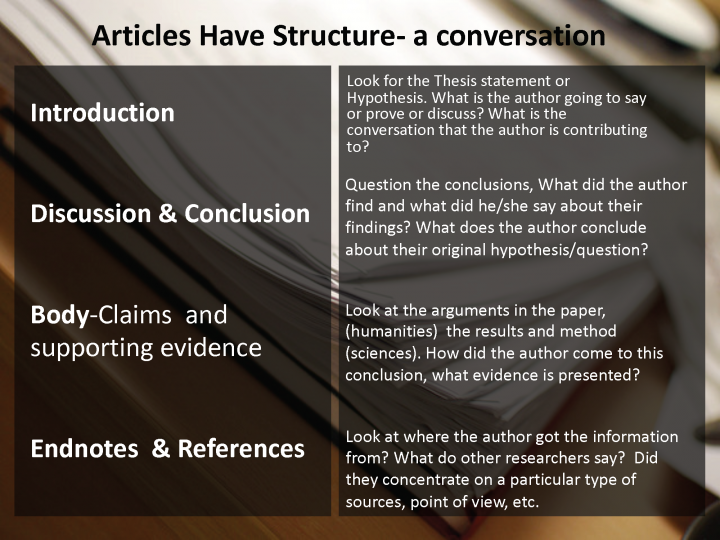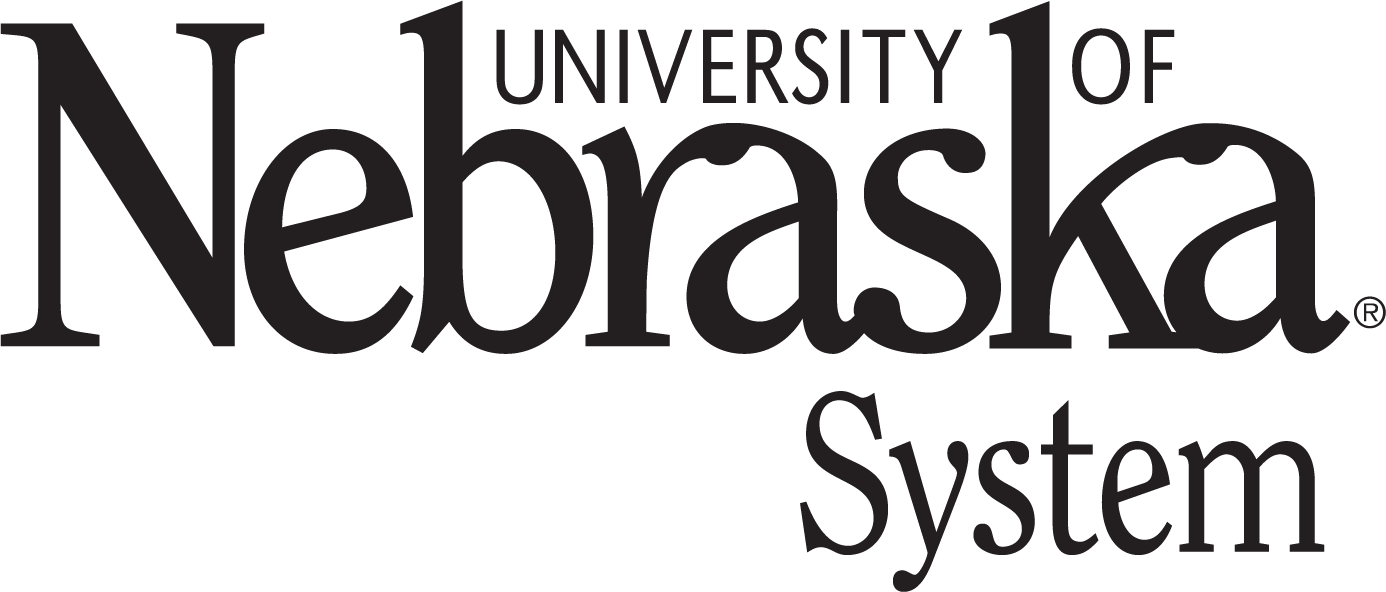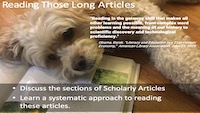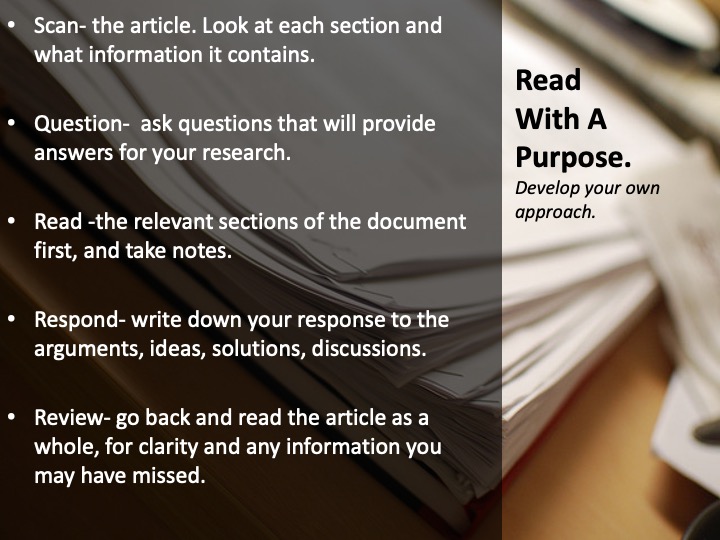3
Lorna Dawes
Reading and Evaluating Sources
By the end of this section you will :
- Identify the parts of a scholarly article.
- Learn a systematic approach to reading scholarly articles.
- Read two academic articles and map out their contents to as a part of your reading process.
The Structure of the Scholarly Article
Scholarly articles have a structure. The structure helps the reader make sense of the researcher’s thoughts, reasoning, results, and inevitably explains the final conclusions of the research. Using the structure of the article to guide you as you read will help you focus and increase your understanding. All scholarly articles regardless of the discipline have an introduction that outlines the purpose of the paper and connects the paper to related research and contributes to research discussions that are currently or have previously taken place on that subject. The body of the paper then proceeds to outline the arguments, discussions, research methods, evidence and the results that the scholar has acquired as they carried out their investigations and exploration. Most papers then end with some type of discussion and interpretation of the results, a resolution of the arguments and reasonings, an explanation of their response, and finally a summary conclusion of their research.
Dividing the scholarly article into four broad sections:
- The Introduction generally tells us WHAT the research is about and WHO else is involved in conversations about this subject.
- The Body of the paper tells us HOW the research was carried out–was it a scientific study of a population or was it an examination of ideas?–and THE OUTCOME of the exploration.
- The Discussion sections explains the MEANING of the results.
- The Conclusion explains what was learnt from the research. Its CONTRIBUTION to the wider scholarly conversation.
When reading scholarly articles, think about what the author is saying in each section, and interrogate the author. Ask questions and try to find out how the paper has addressed your questions. Look at some suggested questions in the slide below.

SCAN:
First take a quick scan of the reading. The primary purpose is to get an overview of the article to confirm that it is relevant to your research. You are also looking to see what information is given in each section of the article.
QUESTION
Now is the time to write down your initial questions in response to what you already know about the subject, what you have scanned in the article, and what you are curious about.
READ
Now you have an idea of what the paper is about, you can take a close reading of each section of the article. Read each section of the article in this order: Introduction, Discussion and Conclusions, and then the main body of the article. Ask some more questions and write down the responses from the paper.
RESPOND
While you are reading, write down your response to the questions and answers that you have gleaned from the article. Write down any unanswered questions that you may have. Follow the author’s reasoning, the arguments, the interpretation of results, and add your own interpretation and analysis. Think of yourself as having a conversation with the author about their views and thoughts.
REVIEW
Now that you have read sections of the article, you should now go back and read the whole article from beginning to end. Making notes, adding more details to your questions and responding to what the author is saying. Continue to read, question and respond to what you are reading. Remember reading is iterative!
Activity:Scholarship as Conversation
Use the SQ3R Approach to read both of your articles and then complete the “Scholarship as Conversation Worksheet” below. One Worksheet for each article.
- Introduction: What issue is the author/s exploring? What is the discussion that the author/is contributing to?
- Purpose: Read the introduction again and write down the specific questions that they author/s are asking. What do they hope to do in the paper?
- Discussion/Conclusion: Read this section and write down the conclusion that the author/s state. What did the author/s findout? What do they now think about their original thesis or hypothesis?
- Evidence/Support: Read the body of the article and see if you can find out some results that the author/s have gathered. See if you can find out the arguments that the author/s use to make their point.
- Export and save the text to a Word Document.
Scholarship as Conversation Worksheet
At the end of this session
- At the end of this session you will have completed the above activity twice and you will have two documents that analyze each of your scholarly articles.
- Be prepared to share with us what these articles are about and how they are relevant to your research.



